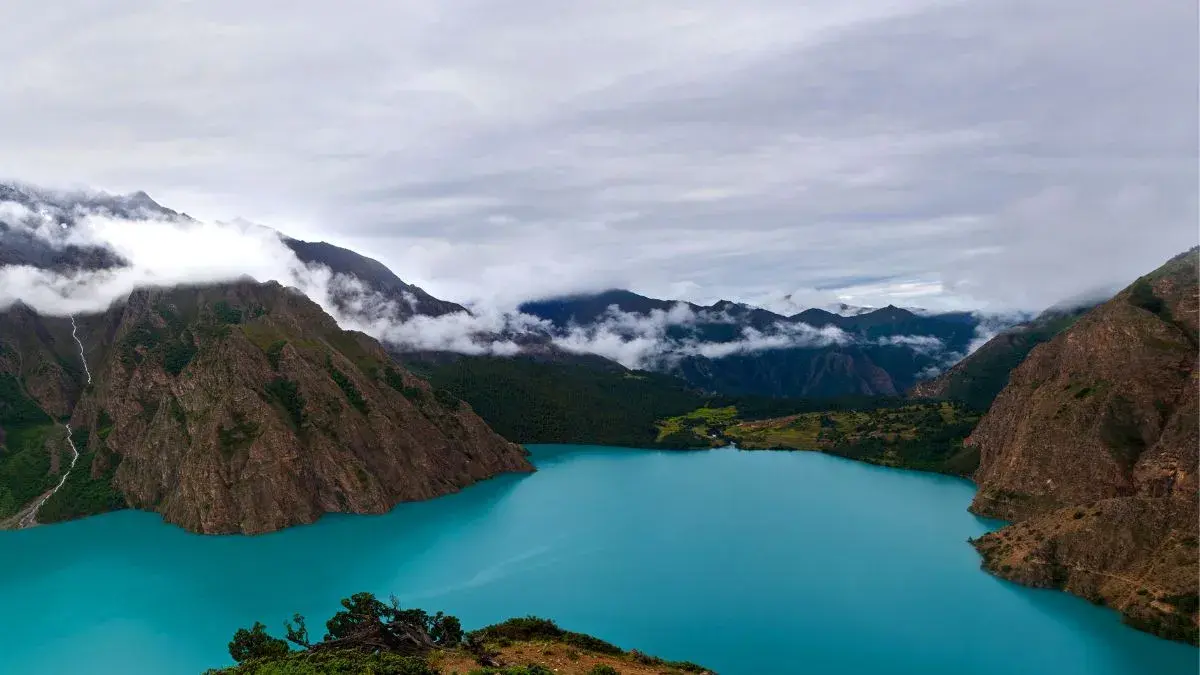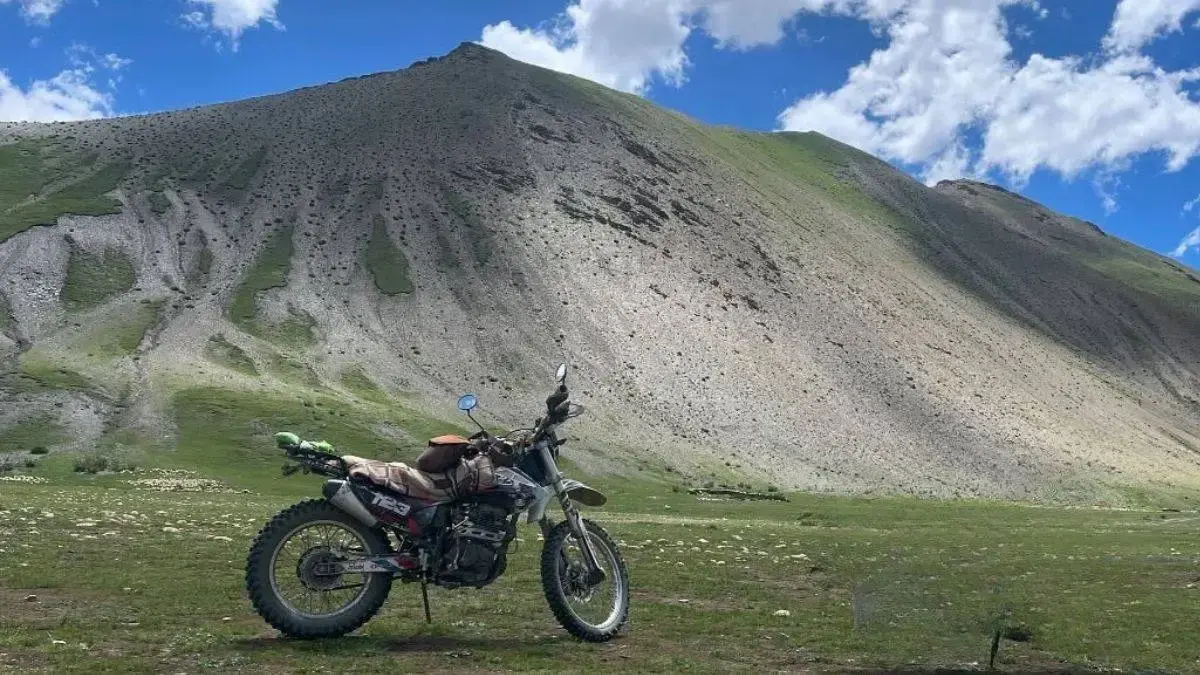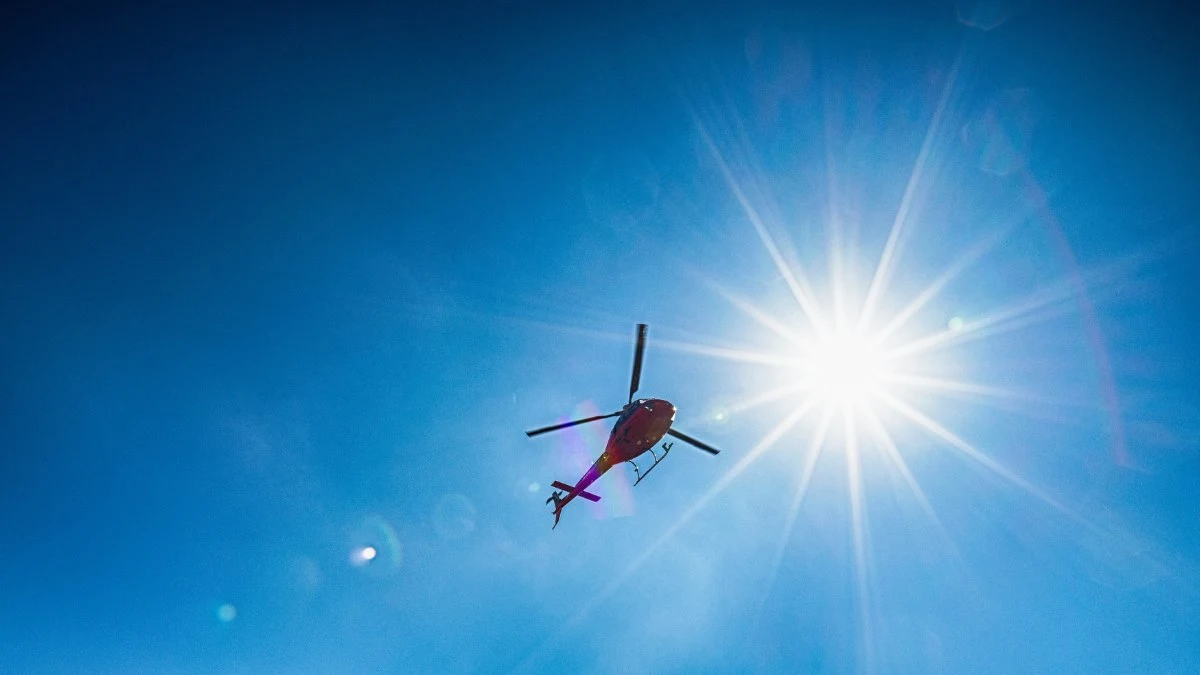Wonders of The Dolpo Region
Explore our curated trips, showcasing the best of the The Dolpo Region
The Allure of the Dolpo Region
Dolpo: Where the Sky Touches Silence

Shey Phoksundo Trek
Journey into the remote wilderness of Lower Dolpo on the Shey Phoksundo Trek where time stands still

Shey Phoksundo Bike Trip
Ride beyond the usual trails and into the heart of Dolpo and reach beside a turquoise lake

Shey Phoksundo Helicopter Tour
Fly above the unmatched views of Dolpo’s landscapes, like the turquoise lake and sacred Bon heritage.
About The Dolpo Region
Dolpo is tucked away in western Nepal. It's behind these massive mountain ranges and huge stretches of nothing that keep it feeling cut off from everything modern. The thing is, this spot counts as one of the remotest places in the Himalayas where folks actually live. High altitude, dry as can be, right up against Tibet with ridges all around and those ancient trade paths snaking through.
The terrain there kind of tells its story with rocks and gusts of wind. Villages hang on slopes way above four thousand meters. They have patches of buckwheat and barley fields that stick to the ground no matter what. Rivers cut through like bright blue streaks in valleys of brown and reddish dirt. Yaks munch away under sheer cliffs worn down by endless winters.
Snowy summits of Kanjiroba and Dhaulagiri tower over the whole scene. Distant just right to look impressive. Close enough, though, to make human grit feel pretty insignificant sometimes. Isolation like that has preserved Dolpos' ways mostly unchanged. Tibetan Buddhism blends right in with the even older Bon practices. Chortens dot the trails. Prayer flags whip around in a sky so intensely blue it almost doesn't end.
Reaching Dolpo or trekking inside it takes real effort. Never was easy on purpose. Patience is what it demands basically. In exchange, you get this sense of stepping into some ancient era that still hangs on.
The Shey Phoksundo National Park
Deep in Dolpo, you find Shey Phoksundo National Park. It is Nepal's biggest protected zone, covering a full 3,555 square kilometers that stretches from the Dhaulagiri mountain range right up to the Tibetan border. Inside the park, Phoksundo Lake shines with this wild blue hue. The color looks like it comes from deep within the water itself, not just some reflection from the sky above. You see the lake sitting high at 3,611 meters. Barren cliffs rise all around it. Waterfalls drop hundreds of meters straight into the calm surface below.
The park guards a really delicate ecosystem up in those high altitudes. Blue sheep wander the valleys there. So do Himalayan tahr, musk deer. And the snow leopard, that one is tough to spot. Birds of prey circle overhead across the alpine passes. Medicinal plants even grow in spots where life seems impossible.
Shey Phoksundo stands out from most national parks. It is not some empty wilderness. People live right inside its borders. Take communities like Ringmo, Saldang, and Tokyu Monastery. They keep to old ways of farming, herding animals, and saying prayers. You know, that kind of rhythm. Conservation here means coexistence, a balance of reverence and resilience that keeps Dolpo’s ancient culture alive.
Best Seasons to Visit the Dolpo Region
Spring (Apr-Jun): High passes clear of snow, fields greening, and wildflowers threading color through the barren slopes. Best for Upper Dolpo routes.
Monsoon (Jul-Sep): Unlike central Nepal, Dolpo lies in the rain shadow, with dry skies, dramatic light, and fewer trekkers. Trails stay open, and colors deepen.
Autumn (Sep-Nov): Sharp skies, golden barley fields, and long visibility. Ideal for photography and festival visits.
Winter (Dec-Mar): Harsh and isolating. Most villages close their upper homes and move lower. Treks are not advised unless you have expedition experience.
The rhythm of Dolpo’s seasons is quiet but absolute, dictated by wind, not calendar.
Culture and People of the Dolpo Region
People in Dolpo are called Dolpa or Dolpo-pa. They come from Tibetan folks who settled there way back, centuries ago, really. They talk in a Tibetan dialect, you know. And they follow Buddhism along with Bon, that old faith before Buddhism showed up. Bon is all about animism and shamanism stuff. Places like Shey Gompa monastery, or Yangjer and Thasung Chholing. Those keep the old ways going. Through chants and artwork. And those butter lamps that flicker on steadily.
Living up there gets tough because of the high altitude. And how far everything is from anywhere else. The whole economy turns on yaks for sure. Salt trading, too. Barley fields. And herbs, medicinal ones like yarsagumba. That is the caterpillar fungus thing people prize from the high meadows. Back in the day, trade across to Tibet was everything for getting by. Still happens now. Caravans head over the border come summer. It is a pattern that beats any map out there.
Then there are festivals. Like the Shey Festival one. It comes around every twelve years. Pulls everyone from the spread-out valleys into one spot. Full of colors and that deep devotion feel. Monks put on masks and danced around. Conch shells blow echoes right off the cliffs. Families get back together after being apart all season.
Meeting folks in Dolpo always hits personal. Like sharing a cup of butter tea in some smoky kitchen setup. Or just a nod from a yak herder passing by. A kid laughing up at four thousand meters high. Those moments. They are the real markers of the place.
Nature and Wildlife in the Dolpo Region
Dolpos got this harsh look to it. But really, there's a lot going on underneath. You find these rare animals living there, ones that are gone from pretty much everywhere else. Snow leopards prowl around. Himalayan blue sheep hang out on the slopes. Musk deer, red foxes, and even that sneaky lynx show up now and then.
Up in those high pastures near Phoksundo, things are alive in ways you wouldn't expect with the air so thin. Small alpine flowers dot the ground. Tough shrubs push through. Medicinal plants like rhodiola and jatamansi grow strong there too. Birds are part of it all. Himalayan griffons soar overhead. Lammergeiers circle high. Impeyan pheasants strut around, their feathers catching the morning light with those shiny colors.
Still, the silence in Dolpo stands out the most. It's like its own kind of wildlife, you know. The wind doesn't just blow wild. It moves steadily, picking up whispers from prayer flags and carrying them over the passes.
Final Word
Dolpo is not for everyone, and that is its grace. It’s a land that doesn’t try to impress or comfort. Instead, it invites , quietly , those willing to walk through stillness and uncertainty.
Here, distances aren’t measured in kilometers but in hours of silence. The mountains are not background; they are presence. And when you finally stand above Phoksundo, watching light turn water into sapphire, you understand something simple and enormous: you’re a guest in a world that doesn’t need you, yet still welcomes you.
Leaving Dolpo feels like waking from a long, lucid dream, one that stays quietly in the edges of your mind.
